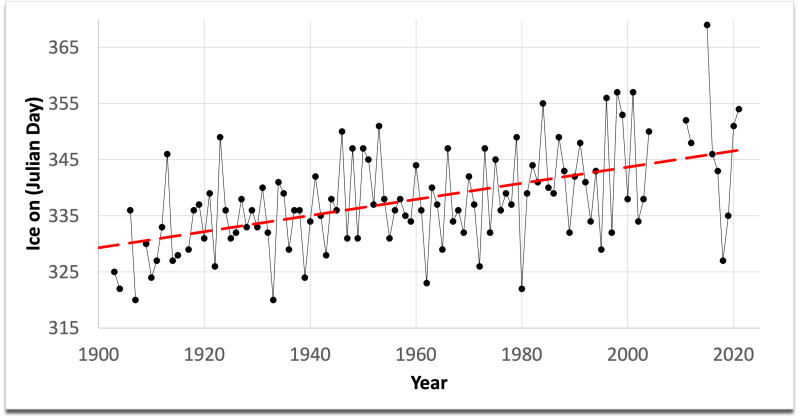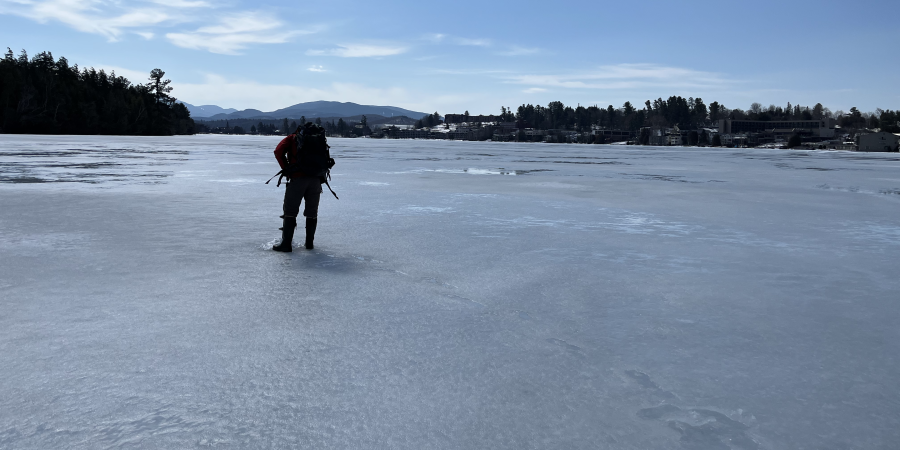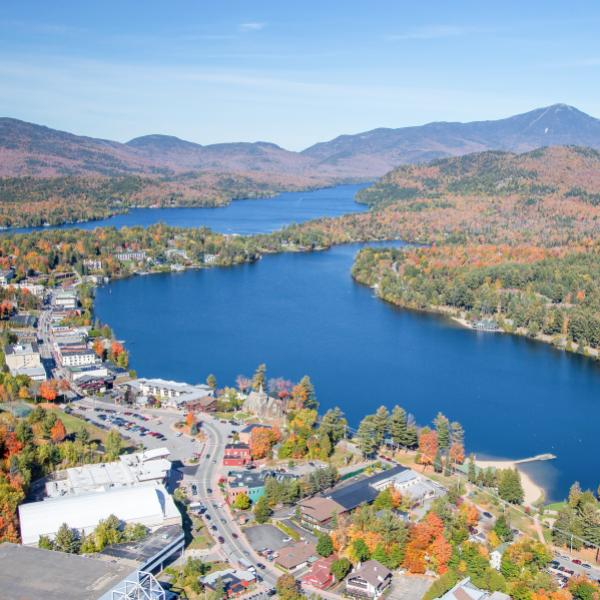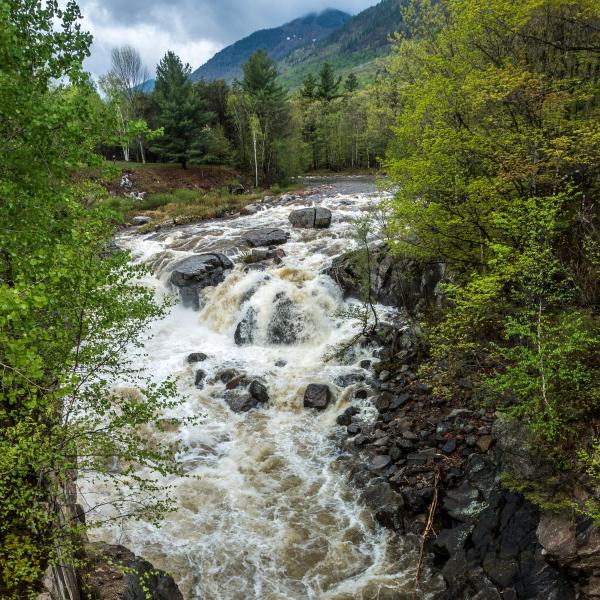Spring is an exciting time of year, and an important one for lakes. We see signs of spring as the days get longer, plants begin to regreen, temperatures rise, and ice begins to recede on lakes in the Ausable River watershed. Ice formation, coverage duration and thaw is dependent on air temperature, cloud cover, and wind. Throughout the winter, rain, snow, and snowmelt affect the length of time a lake is frozen.
Keeping an ice record is important for understanding lake water quality in an individual year as well as over time, and, increasingly, scientists are interested in ice in, ice duration and ice out data as an indicator of climate change. Ice in occurs when the entire lake surface is covered with ice. Ice out occurs when the entire lake surface is free of ice and can be navigated from one end to the other without impediment. Ice duration is counted from the ice in date of the one year to the ice out date of the next year.

Ice on occurs on average 17 days later than it did in 1903. The mean date for ice on for the entire record is December 3rd. The mean since 2000 is December 11th.
For Mirror Lake, the Ausable River Association records the ice in, ice coverage duration and ice out (or thaw) each year. Mirror Lake's ice record is one of the longest in New York State, with records from 1903. The average ice out date is April 21st, with no significant change in ice off date for the recorded period. The duration of ice cover on Mirror Lake has been significantly reduced since 1903. The average ice coverage duration is 24 days less than when records where first kept. The ice cover duration is driven primarily by later ice on. Other lakes that have similar ice record lengths across North America show similar changes.
Support our water quality work for clean water and healthy streams. Give with confidence today!
The changes in ice cover can affect the characteristics of a lake. For instance, exposed water or ice-free lakes will absorb and retain heat that would be reflected if it was ice. The timing and duration of ice cover on lakes also effects spring turnover, a crucial process that redistributes oxygen and nutrients throughout the water column. Longer periods where the lake is thermally stratified (divided into sections based on temperature) can increased oxygen depletion in the bottom waters of the lake. Lower amounts of oxygen can lead to algae blooms, and in the worst case, fish kills, and the release of phosphorus from sediment at the bottom of the lake. Also, longer periods of stratification and warming temperatures are threats to lake trout and other aquatic species. The changes in ice coverage combined with the effects of road salt, which has disrupted spring turnover in Mirror Lake, makes the lake vulnerable to negative effects. Our biweekly monitoring, however, can quickly identify changes and captures the year-round cycles in Mirror Lake. Meanwhile, our Salt Use Reduction Initiative focuses on reducing salt usage while maintaining safe roads and walkways.
This ice record over more than 100 years is meaningful in determining long term trends and variations. Recording of this data is crucial to understanding climate change, its effects and also natural year-to-year variations. Our observations keep Mirror Lake's ice record intact, and our monitoring ensures we will capture changes.
Story by Leanna Thalmann, Water Quality Associate. Top photo: Walking on Mirror Lake's ice.
Sign-up for our e-newsletter to get weekly updates on the latest stories from the Ausable River Association.





